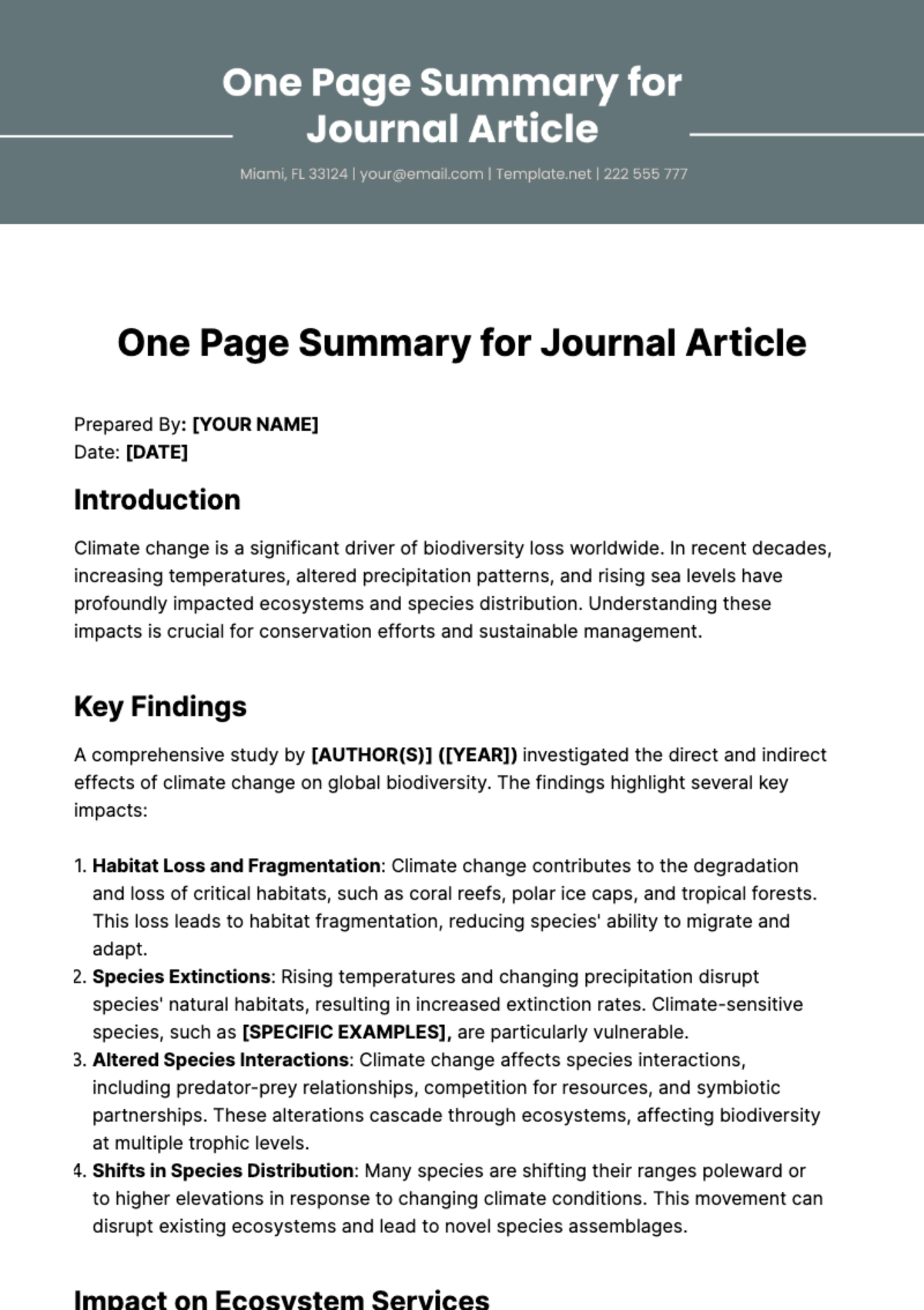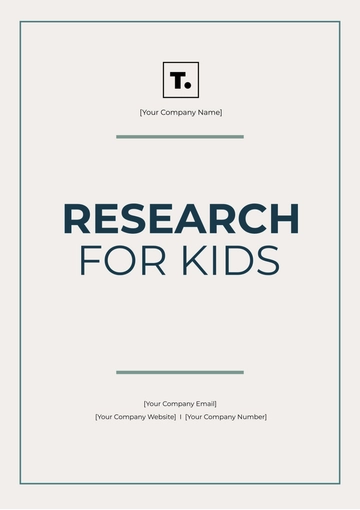One Page Summary for Journal Article
Prepared By: [YOUR NAME]
Date: [DATE]
Introduction
Climate change is a significant driver of biodiversity loss worldwide. In recent decades, increasing temperatures, altered precipitation patterns, and rising sea levels have profoundly impacted ecosystems and species distribution. Understanding these impacts is crucial for conservation efforts and sustainable management.
Key Findings
A comprehensive study by [AUTHOR(S)] ([YEAR]) investigated the direct and indirect effects of climate change on global biodiversity. The findings highlight several key impacts:
Habitat Loss and Fragmentation: Climate change contributes to the degradation and loss of critical habitats, such as coral reefs, polar ice caps, and tropical forests. This loss leads to habitat fragmentation, reducing species' ability to migrate and adapt.
Species Extinctions: Rising temperatures and changing precipitation disrupt species' natural habitats, resulting in increased extinction rates. Climate-sensitive species, such as [SPECIFIC EXAMPLES], are particularly vulnerable.
Altered Species Interactions: Climate change affects species interactions, including predator-prey relationships, competition for resources, and symbiotic partnerships. These alterations cascade through ecosystems, affecting biodiversity at multiple trophic levels.
Shifts in Species Distribution: Many species are shifting their ranges poleward or to higher elevations in response to changing climate conditions. This movement can disrupt existing ecosystems and lead to novel species assemblages.
Impact on Ecosystem Services
Climate change impacts on biodiversity have significant implications for ecosystem services:
Pollination: Changes in flowering times and the distribution of pollinators affect pollination services, impacting crop yields and wild plant reproduction.
Water Regulation: Altered precipitation patterns influence water availability, affecting freshwater ecosystems and the services they provide, such as flood regulation and water purification.
Carbon Sequestration: Changes in vegetation distribution and productivity impact carbon sequestration rates, influencing climate regulation and global carbon cycles.
Mitigation Strategies
Effective strategies to mitigate the impact of climate change on biodiversity include:
Habitat Restoration: Restoring degraded habitats and creating wildlife corridors can help species adapt to changing conditions and maintain genetic diversity.
Climate-smart Conservation: Integrating climate change considerations into conservation planning ensures that protected areas are resilient to future climate scenarios.
Community Engagement: Involving local communities in conservation efforts fosters stewardship and enhances the effectiveness of mitigation measures.
Case Studies
The article presents compelling case studies illustrating climate change impacts on biodiversity:
Case Study | Findings |
|---|
1. [CASE STUDY 1] | [FINDINGS] |
2. [CASE STUDY 2] | [FINDINGS] |
3. [CASE STUDY 3] | [FINDINGS] |
Conclusion
[AUTHOR(S)]'s study underscores the urgent need for collaborative efforts to mitigate climate change impacts on biodiversity. Conservation strategies must integrate climate resilience into habitat management and prioritize the protection of climate-sensitive species.
Summary Templates @ Template.net






























